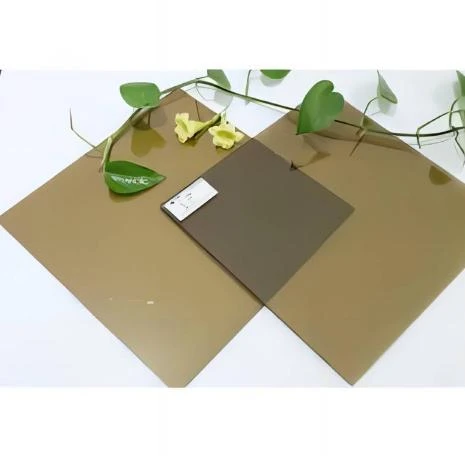Sheet Glass Manufacturing A Comprehensive Overview
Sheet glass manufacturing is a vital process in the glass industry, producing flat glass used in a variety of applications, including windows, mirrors, and glass facades in buildings
. This article outlines the key processes involved in sheet glass manufacturing, the raw materials used, and applications in various sectors.
The production of sheet glass typically begins with the selection and preparation of raw materials. The primary ingredients for glass production include silica sand, soda ash, and limestone. Silica sand provides the primary structure of glass, while soda ash acts as a flux, reducing the melting temperature of the silica. Limestone is added to improve the durability and chemical resistance of the final product. Additionally, coloring agents and other additives may be incorporated to achieve specific properties or aesthetics.
Once the raw materials are carefully measured and mixed, the next step is melting. This is typically conducted in a furnace, where the mixture is heated to temperatures exceeding 1,700 degrees Celsius. The molten glass is then transformed into sheet glass using various methods, the most common of which is the float glass process developed by Sir Alastair Pilkington in the 1950s. In the float glass process, molten glass is poured onto a surface of molten tin, allowing the glass to spread uniformly. This method results in flat, smooth sheets with excellent optical clarity and surface quality.
sheet glass manufacturing
After the glass is formed, it undergoes a cooling process known as annealing. During this process, the glass is gradually cooled in a controlled environment to relieve internal stresses that may have developed during production. If the glass is rapidly cooled, it can lead to fractures or weaknesses in the material. Once the cooling process is complete, the glass sheets can be cut to desired sizes or subjected to further processing, such as tempering or laminating, depending on their intended use.
Sheet glass is renowned for its versatility and wide range of applications. In the construction industry, it is a fundamental component for windows, doors, glass walls, and roofing, providing natural light and thermal insulation while enhancing aesthetic appeal. Additionally, in automotive manufacturing, laminated and tempered glass is used for safety and performance in windshields and side windows. The electronics industry also relies on sheet glass for displays, touch screens, and other components. Furthermore, glass is finding innovative uses in interior design, where it is utilized for partitions, tabletops, and decorative elements.
Sustainability is an increasingly important aspect of sheet glass manufacturing. The industry is seeking ways to reduce energy consumption and carbon emissions through the use of recycled glass, known as cullet, in the production process. Incorporating cullet reduces the amount of raw materials required and lowers the melting temperature, leading to energy savings. Companies are also exploring alternative energy sources, such as solar and wind power, to power their manufacturing facilities to further minimize their environmental impact.
In conclusion, sheet glass manufacturing is a complex process involving the careful selection of raw materials, high-temperature melting, and innovative forming techniques. Its applications span various industries, contributing to architectural beauty, automotive safety, and electronic advancements. As the industry moves toward more sustainable practices, the future of sheet glass manufacturing promises to be both innovative and environmentally conscious.
 Afrikaans
Afrikaans  Albanian
Albanian  Amharic
Amharic  Arabic
Arabic  Armenian
Armenian  Azerbaijani
Azerbaijani  Basque
Basque  Belarusian
Belarusian  Bengali
Bengali  Bosnian
Bosnian  Bulgarian
Bulgarian  Catalan
Catalan  Cebuano
Cebuano  Corsican
Corsican  Croatian
Croatian  Czech
Czech  Danish
Danish  Dutch
Dutch  English
English  Esperanto
Esperanto  Estonian
Estonian  Finnish
Finnish  French
French  Frisian
Frisian  Galician
Galician  Georgian
Georgian  German
German  Greek
Greek  Gujarati
Gujarati  Haitian Creole
Haitian Creole  hausa
hausa  hawaiian
hawaiian  Hebrew
Hebrew  Hindi
Hindi  Miao
Miao  Hungarian
Hungarian  Icelandic
Icelandic  igbo
igbo  Indonesian
Indonesian  irish
irish  Italian
Italian  Japanese
Japanese  Javanese
Javanese  Kannada
Kannada  kazakh
kazakh  Khmer
Khmer  Rwandese
Rwandese  Korean
Korean  Kurdish
Kurdish  Kyrgyz
Kyrgyz  Lao
Lao  Latin
Latin  Latvian
Latvian  Lithuanian
Lithuanian  Luxembourgish
Luxembourgish  Macedonian
Macedonian  Malgashi
Malgashi  Malay
Malay  Malayalam
Malayalam  Maltese
Maltese  Maori
Maori  Marathi
Marathi  Mongolian
Mongolian  Myanmar
Myanmar  Nepali
Nepali  Norwegian
Norwegian  Norwegian
Norwegian  Occitan
Occitan  Pashto
Pashto  Persian
Persian  Polish
Polish  Portuguese
Portuguese  Punjabi
Punjabi  Romanian
Romanian  Russian
Russian  Samoan
Samoan  Scottish Gaelic
Scottish Gaelic  Serbian
Serbian  Sesotho
Sesotho  Shona
Shona  Sindhi
Sindhi  Sinhala
Sinhala  Slovak
Slovak  Slovenian
Slovenian  Somali
Somali  Spanish
Spanish  Sundanese
Sundanese  Swahili
Swahili  Swedish
Swedish  Tagalog
Tagalog  Tajik
Tajik  Tamil
Tamil  Tatar
Tatar  Telugu
Telugu  Thai
Thai  Turkish
Turkish  Turkmen
Turkmen  Ukrainian
Ukrainian  Urdu
Urdu  Uighur
Uighur  Uzbek
Uzbek  Vietnamese
Vietnamese  Welsh
Welsh  Bantu
Bantu  Yiddish
Yiddish  Yoruba
Yoruba  Zulu
Zulu 

